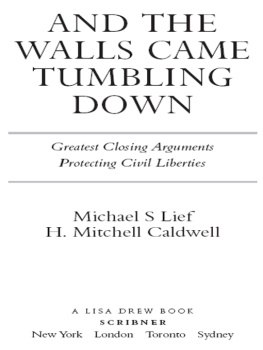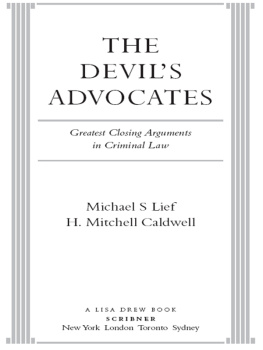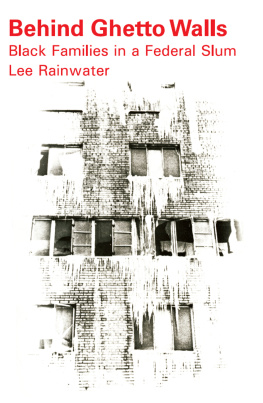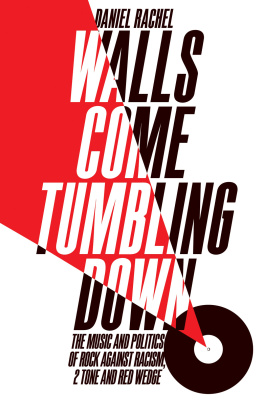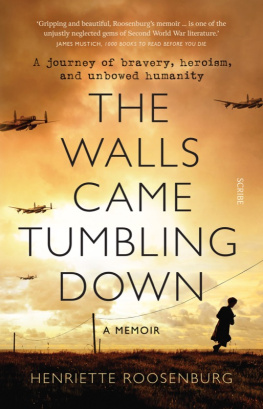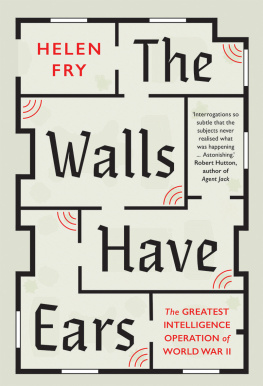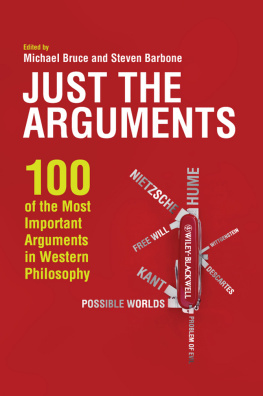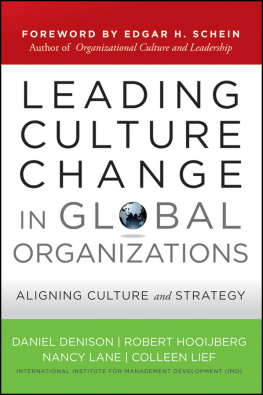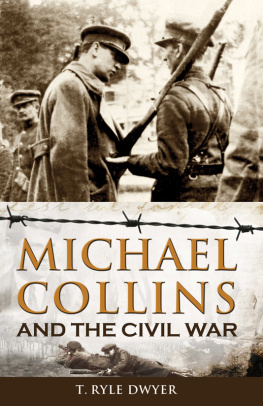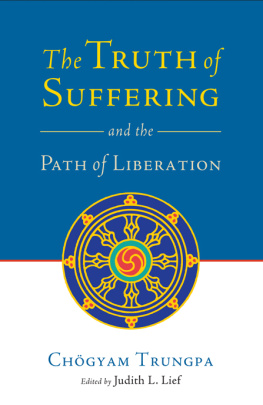Michael S Lief - And the Walls Came Tumbling Down: Greatest Closing Arguments Protecting Civil Libertie
Here you can read online Michael S Lief - And the Walls Came Tumbling Down: Greatest Closing Arguments Protecting Civil Libertie full text of the book (entire story) in english for free. Download pdf and epub, get meaning, cover and reviews about this ebook. year: 2004, publisher: Scribner, genre: Science fiction. Description of the work, (preface) as well as reviews are available. Best literature library LitArk.com created for fans of good reading and offers a wide selection of genres:
Romance novel
Science fiction
Adventure
Detective
Science
History
Home and family
Prose
Art
Politics
Computer
Non-fiction
Religion
Business
Children
Humor
Choose a favorite category and find really read worthwhile books. Enjoy immersion in the world of imagination, feel the emotions of the characters or learn something new for yourself, make an fascinating discovery.
- Book:And the Walls Came Tumbling Down: Greatest Closing Arguments Protecting Civil Libertie
- Author:
- Publisher:Scribner
- Genre:
- Year:2004
- Rating:4 / 5
- Favourites:Add to favourites
- Your mark:
- 80
- 1
- 2
- 3
- 4
- 5
And the Walls Came Tumbling Down: Greatest Closing Arguments Protecting Civil Libertie: summary, description and annotation
We offer to read an annotation, description, summary or preface (depends on what the author of the book "And the Walls Came Tumbling Down: Greatest Closing Arguments Protecting Civil Libertie" wrote himself). If you haven't found the necessary information about the book — write in the comments, we will try to find it.
Michael S Lief: author's other books
Who wrote And the Walls Came Tumbling Down: Greatest Closing Arguments Protecting Civil Libertie? Find out the surname, the name of the author of the book and a list of all author's works by series.
And the Walls Came Tumbling Down: Greatest Closing Arguments Protecting Civil Libertie — read online for free the complete book (whole text) full work
Below is the text of the book, divided by pages. System saving the place of the last page read, allows you to conveniently read the book "And the Walls Came Tumbling Down: Greatest Closing Arguments Protecting Civil Libertie" online for free, without having to search again every time where you left off. Put a bookmark, and you can go to the page where you finished reading at any time.
Font size:
Interval:
Bookmark:

H. Mitchell Caldwell
The Devils Advocates:
Greatest Closing Arguments in Criminal Law
Ladies and Gentlemen of the Jury:
Greatest Closing Arguments in Modern Law
(with Ben Bycel)

A LISA DREW BOOK / SCRIBNER
1230 Avenue of the Americas
New York, NY 10020
Copyright 2004 by Michael S Lief and H. Mitchell Caldwell
All rights reserved, including the right of reproduction in whole or in part in any form.
SCRIBNER and design are trademarks of Macmillan Library Reference USA, Inc., used under license by Simon & Schuster, the publisher of this work.
A LISA DREW BOOK is a trademark of Simon & Schuster, Inc.
Library of Congress Cataloging-in-Publication Data
Lief, Michael S
And the walls came tumbling down: greatest closing arguments protecting civil liberties/Michael S Lief, H. Mitchell Caldwell.
p. cm.
A Lisa Drew book.
Includes index.
1. Civil rightsUnited StatesCasesPopular works.
I. Caldwell, Harry M. II. Title.
KF4750.L54 2004
342.7308'5dc22 2004045431
ISBN: 1-4165-4863-7
Karen Ann Quinlan drawing reprinted with permission from Paul Conrad, Los Angeles Times, 1985.
Visit us on the World Wide Web:
http://www.SimonSays.com
This book is dedicated to the memory of
Jack Harry Caldwell, 19222003, and
Marjorie Kay Caldwell, 19292004. Lives well lived.
And Corporal Harry (Weiner) Lief, U.S. Army, Troop E,
Third Cavalry, 19161923.
Youre going to eat those eggs or wear them.
First thanks must go to our mentors and agents supreme, Maureen and Eric Lasher, and to our brilliant editor, Lisa Drew. We are pleased to note the contributions of the law students whose industry and creativity were the lifeblood of this work: Michael Blinde, Josh Stambaugh, William Bollard, Jason Barsanti, Charles Kenyon, Michael Cernovich, Kjirstin Graham, Susan Hill, and especially Charity Hansen.
We are also indebted to Mary Cosgrove of Phillips Nizer LLP, for providing the transcripts from the Faulk case; and to Mrs. Paul Conrad and the Los Angeles Times for graciously granting permission for us to include Pauls drawing of Karen Ann Quinlan.
Lastbut by no means leastwe must acknowledge our word processors and sounding boards: Lisa Schmidt, Candace Warren, Sheila McDonald, and Arlene Jakes.
Thank you all.
WALLS CAME
TUMBLING
OWN
September 11, 2001. November 22, 1963. December 7, 1941. Americans of all ages remember where they were, what they were doing, when they first became aware of monstrous acts of murder and war. In an instant, everything changed. With a thunderclapthe whine of jet engines, a rifle shot, and the screams of the doomedthe nation loses its innocence yet again.
But not every momentous paradigm shift is announced by the thundering hoofbeats of the Four Horsemen of the Apocalypse.
Other events, more subtle, have changed the way we live. Profound, tectonic shifts in Americas cultural, social, and legal landscape have taken place far removed in time and space from the glare of the media, experienced by a relative few who witnessed history being made. And, like a pebble tossed in a pond, these seemingly insignificant eventswrit small upon a canvas larger than any could then imaginesend ripples out in ever-increasing circles, affecting us in ways impossible to foretell.
A woman walks into a voting booth, casts her ballot, and is arrested by the police for the crime of voting. An anguished family asks a doctor to let their daughter die with dignity, only to be told the law wont allow it, the patients wishes be damned. State doctors decide a young woman they deem of below-average intelligence must not be allowed to pass her defective intellect on to her children and order her forcibly sterilized.
Years later, another woman casts her ballot without giving it a second thought and a man sits with his wife and signs a Do Not Resuscitate order before his operation. Every day millions of Americans enjoy the freedom to decide what they shall do with their property, their body, their speech, their vote, as a result of hard-fought battles won or lost over the last 150 years in courtrooms from Maine to California.
When our society has attempted to untangle the Gordian knots of slavery or the right to die, the political process has often proved unable or unwilling to address these complex issues. Stepping into the breech were the men and women of the bar. When legislators will not or cannot legislate, Americans have turned to the judicial system. And so lawyers and judges have often been the first to tackle some of the most vexatious dilemmas to confront this nation. With twenty-twenty hindsight, we can say that sometimes they got it right (freeing the Amistad slaves), and sometimes they got it wrong (sterilizing Carrie Buck). But, again with hindsight, we know that these trials have helped bring us closer to resolving profound and complex problems that have faced the American people.
The process has not changed over time. In the courtroom, the fundamentals of our democratic heritage and our future come together. It begins like this: The testimony is done; the witnesses have left. While the jurors sit waiting, an expectant hush falls over the room. The trial lawyer strides into the well and stands before them, pauses, then begins speaking. The jurors listen to the skillful interweaving of testimony, facts, storytelling, and analogy, some swept up in the words and rhythms of the advocates argument, some taking notes, others just watching.
The argument reaches a climax as the attorney asks, sometimes demands, that the jurors do the right thing. Then they retire to mull over all that theyve seen and heard. And when they return to the courtroom, the judge asks, Have you reached a verdict? The foreperson stands and answers, We have, Your Honor.
Tension mounts. What say you in the matter before this court? As the answer echoes throughout the courtroom, the lives of all Americans are affected.
We have collected summations from trials that have, without overstating the case, changed the way we live our lives. The arguments we have chosen for this book deal with issues that have defined our civil rights. Selected for the impact they have had upon American society, these represent the finest work of lawyers still famous and others now little known to the modern reader.
Weve edited many of the arguments for length. Our experiences in the courtroom have shown us that lawyers often go into fact-specific detailnecessary perhaps for the jurors, but adding nothing to the readers understanding and enjoyment. Wielding as delicate a knife as possible, weve excised those portions, leaving behind these marvelous summations. And, of course, nothing has been added.
Until now, only the twelve jurors sitting in the box or the nine justices of the Supreme Court sitting on the bench have felt the full power of those words aimed at their hearts and minds. But now you can be in the courtroom, listen to some of the most important battles of all time, and ask, What would I have done? How would I have voted?
Karen Ann Quinlan and the Right to Die
Can anything be more degrading, than to be offered up as a living sacrifice to the materialistic and misguided belief that death can somehow be cheated, if only we find the right combination of wires and gauges, transistors and tubes?
Paul W. Armstrong, attorney for Karen Ann Quinlan
Font size:
Interval:
Bookmark:
Similar books «And the Walls Came Tumbling Down: Greatest Closing Arguments Protecting Civil Libertie»
Look at similar books to And the Walls Came Tumbling Down: Greatest Closing Arguments Protecting Civil Libertie. We have selected literature similar in name and meaning in the hope of providing readers with more options to find new, interesting, not yet read works.
Discussion, reviews of the book And the Walls Came Tumbling Down: Greatest Closing Arguments Protecting Civil Libertie and just readers' own opinions. Leave your comments, write what you think about the work, its meaning or the main characters. Specify what exactly you liked and what you didn't like, and why you think so.

